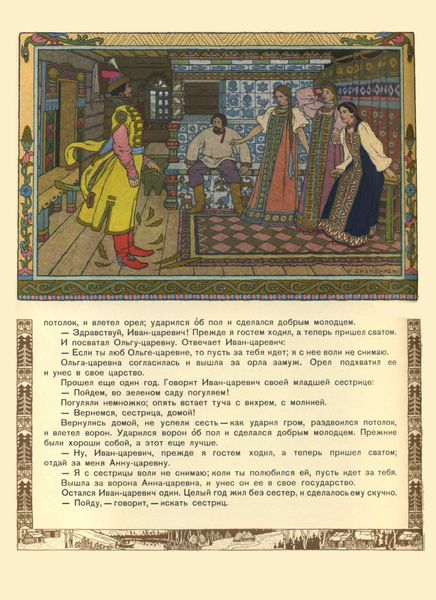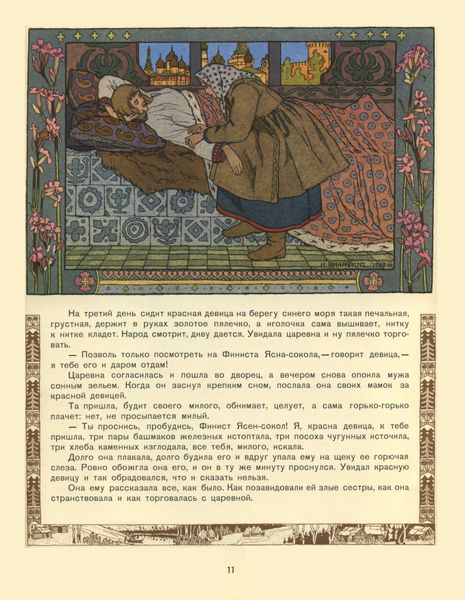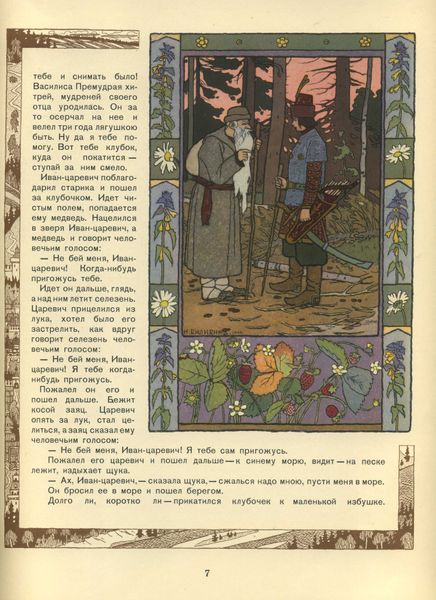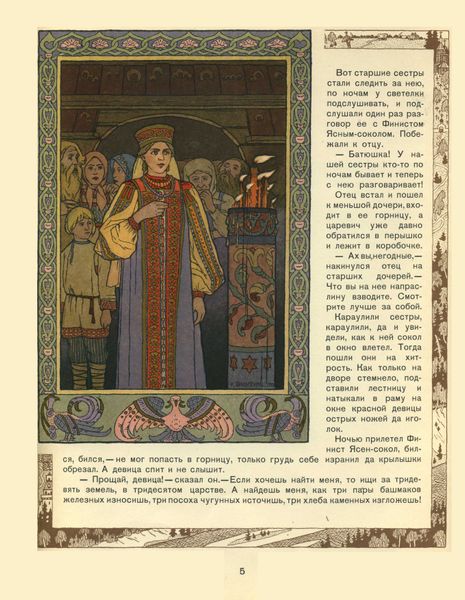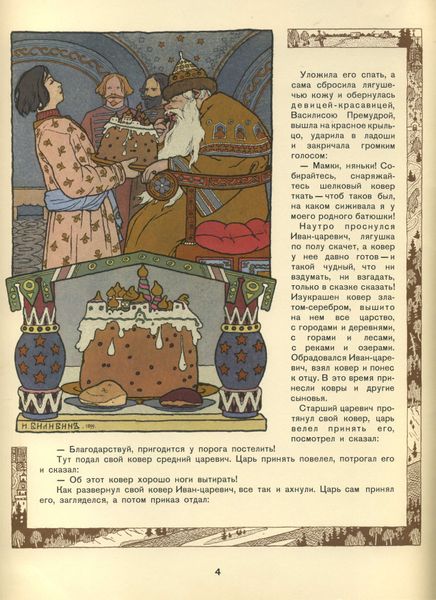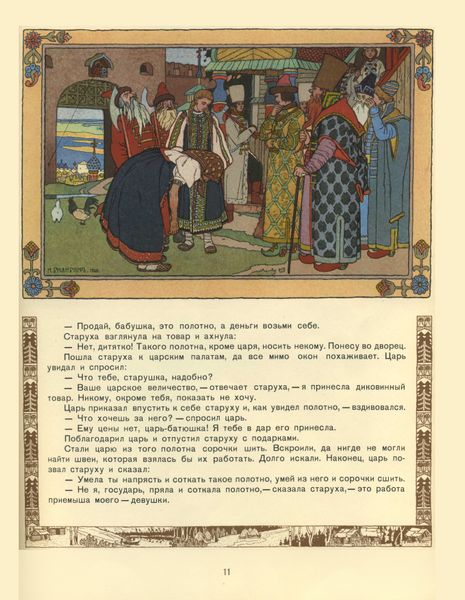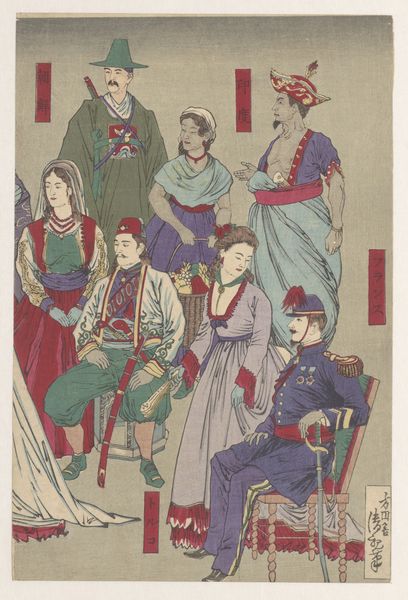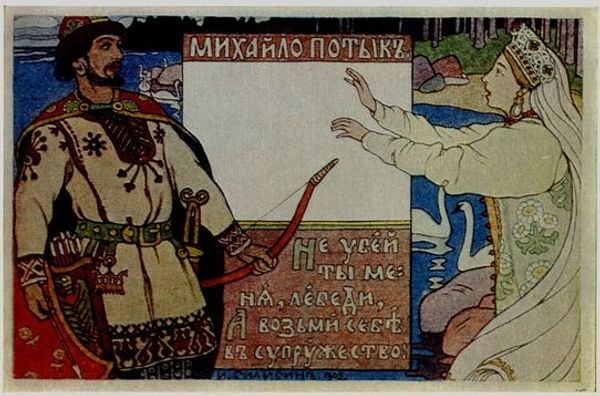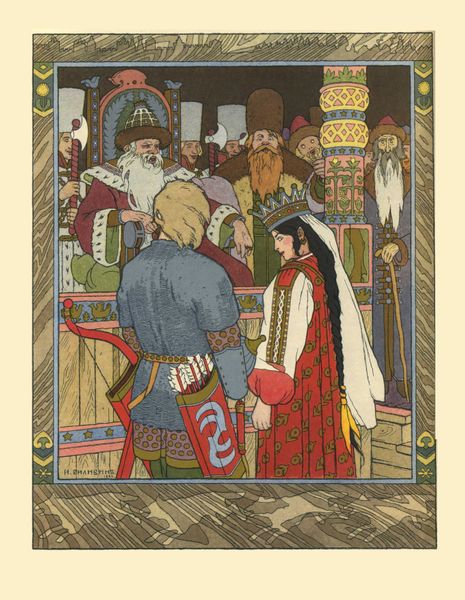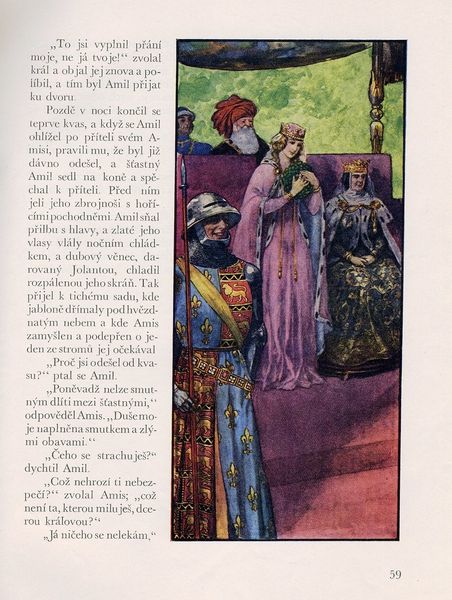
painting, paper, ink
#
narrative-art
#
painting
#
story telling
#
traditional media
#
bird
#
paper
#
text
#
ink
#
folk-art
#
mythology
#
russian-avant-garde
Copyright: Public domain
Curator: Let's turn our attention to Ivan Bilibin's "Illustration for the Tale of Prince Ivan, The Firebird and the Grey Wolf," created around 1899. It's executed with ink and watercolor on paper. What strikes you about it initially? Editor: I’m immediately drawn to the stage-like setting and the somewhat rigid formality. It’s as if the characters are performing in a play. The mood, however, hints at underlying tensions or an impending important decision, all cast in very deliberate lines and a fairytale palette. Curator: Absolutely. Bilibin was deeply interested in stage design and folk art. The print-making processes, evident in the bold outlines and flat color planes, lend a certain visual directness. The border design is a fascinating detail; the application of what some might deem 'craft' elevate and amplify the illustration. Editor: And that aesthetic choice speaks volumes about the revival of Russian folk traditions during that time. These weren't just quaint stories, they were assertions of national identity in the face of imperial pressure and evolving social structures. The Tsar, looming larger than anyone else and gesturing outwards, makes me wonder if that gesture isn't demanding allegiance and obedience from Prince Ivan, potentially within some kind of patriarchal trap. Curator: Precisely! Bilibin embraced the concept of *narodnost* which promoted national spirit. He designed his illustrations almost like woodcuts which references old printmaking techniques. The meticulous craft points to labor – how stories and art are painstakingly brought into existence. Editor: It reminds us, doesn't it, that fairy tales aren't frivolous. They embody cultural anxieties and desires. That the story features male characters implies this folk narrative could offer a lens through which we understand historical power dynamics in late Tsarist Russia. Curator: Indeed. Considering the context of rapidly industrializing Russia and the artist's engagement in the 'Arts and Crafts' ethos, we can understand the illustration's focus on detailed work, skill, and accessible means of production. Bilibin highlights the worth in materials and the artistic production, effectively creating work for the public, rather than for a select wealthy few. Editor: It’s an interesting reminder that visual choices—colour, scale, setting—can all be mobilized to reflect and reinforce dominant ideologies or, subtly perhaps, question them. That this seemingly innocent illustration contains within it potential themes about tradition, resistance and even subversion, reveals how intertwined the production and consumption of visual material truly are.
Comments
No comments
Be the first to comment and join the conversation on the ultimate creative platform.
